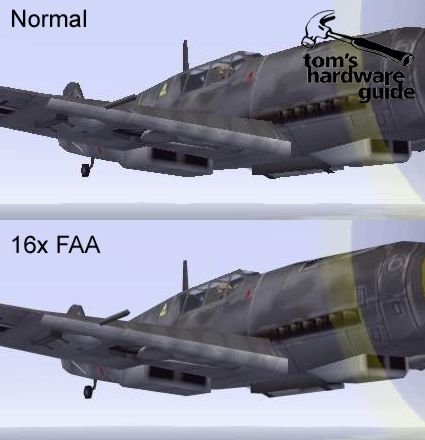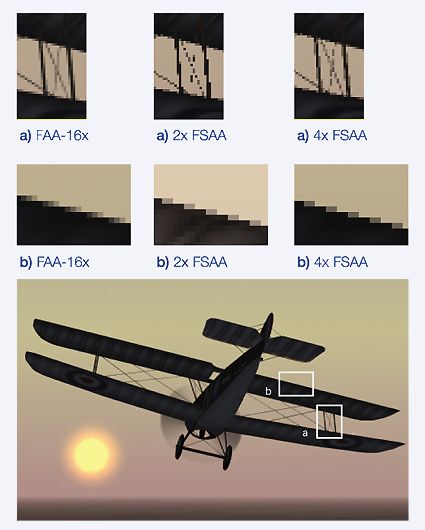Matrox Parhelia-512 - The Challenger
16x Fragment Anti-Aliasing, Continued
So much about the technology to date. With the Parhelia-512, Matrox takes an entirely different route, namely, fragment anti-aliasing. This technique gets to the heart of the problem. After all, only the edges needed to be smoothed out, and this only accounts for 5% to 20% of the pixels in a scene. With this in mind, supersampling and multisampling are thus extremely ineffective, since the majority of pixels actually don't need to be re-calculated.
Parhelia recognizes a pixel based on the edges of the triangles and then evaluates whether or not this is "fragmented," i.e., whether another object is next to, or overlaps, the object in question. This lets the chip recognize whether or not a pixel is completely covered, completely exposed or overlapped only on the edges (fragmented). In the first two cases, the pixels are instantly allocated to the RAM. All fragmented pixels are assigned to a fragment buffer, where the colors of the pixels are then re-calculated with 16x subpixel precision. Finally, these pixels are added to the rest of the scene that has been stored to memory.
Matrox claims that this process allows for an image quality that corresponds to 16x FSAA quality, while minimizing the loss in performance at the same time. However, there are cases where fragment anti-aliasing doesn't work, for example, in scenes where the stencil buffer is used. Here, the user can only resort to very slow supersampling, even if the high memory bandwidth of 256-bit DDR is supposed to mitigate this undesirable effect somewhat. Unfortunately, Matrox does not offer a list of compatible games at the moment. Stencil buffers are often used to calculate shadows in games.
It's also interesting to compare quality. For example, Parhelia's fragment antialiasing (FAA) does not recognize lines that are rendered in the form of textures. Supersampling and multisampling, by comparison, smooth out these edges as well. On the other hand, roll-playing games benefit from FAA, since menus aren't overly softened as they are with multisampling FSAA and supersampling FSAA.
Get Tom's Hardware's best news and in-depth reviews, straight to your inbox.
Current page: 16x Fragment Anti-Aliasing, Continued
Prev Page 16x Fragment Anti-Aliasing Next Page Surround Gaming

